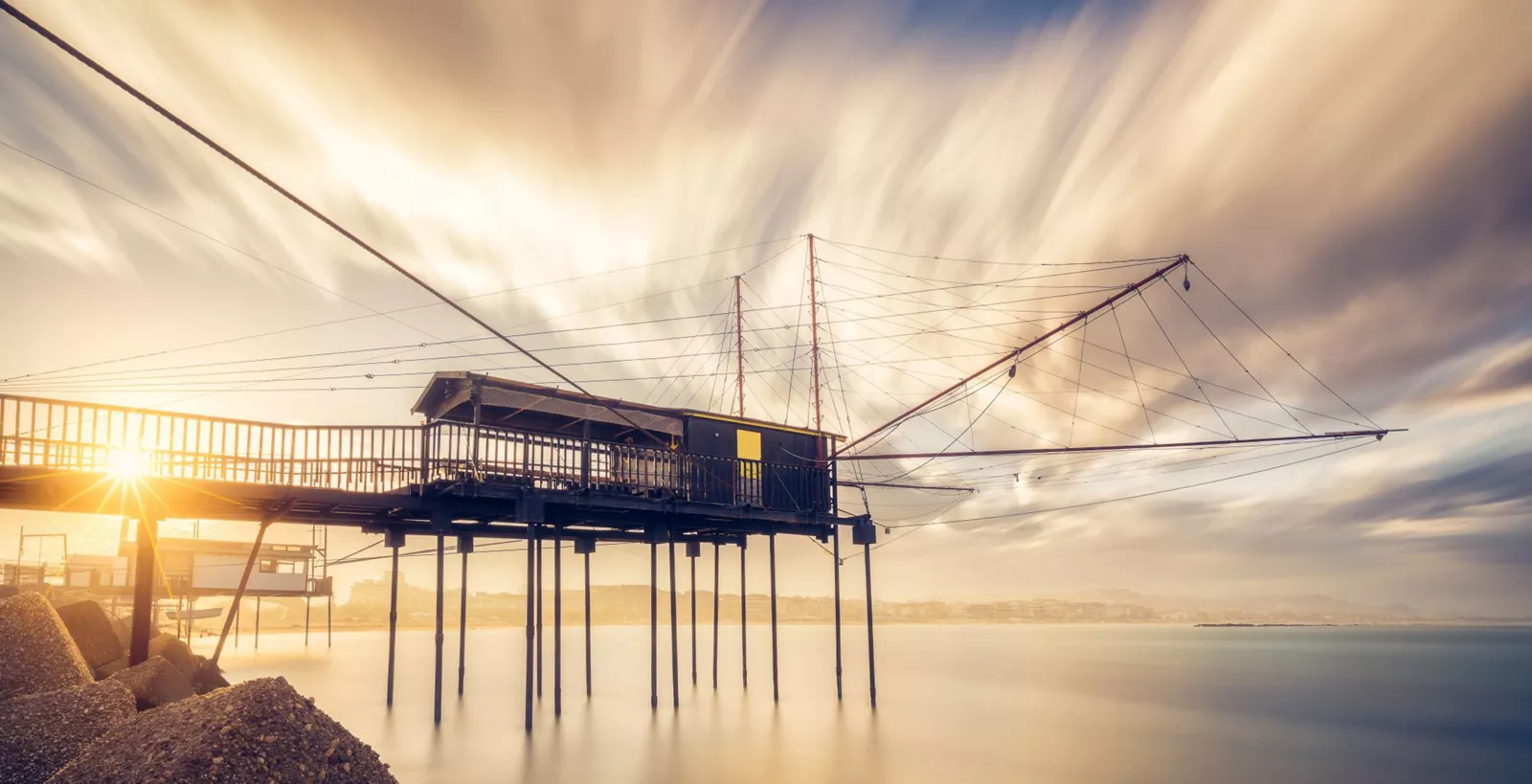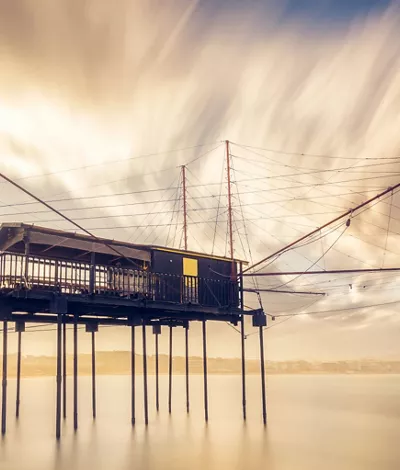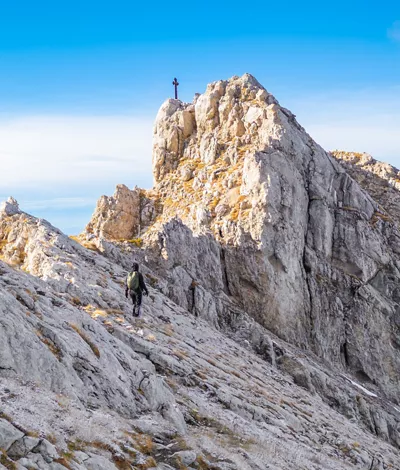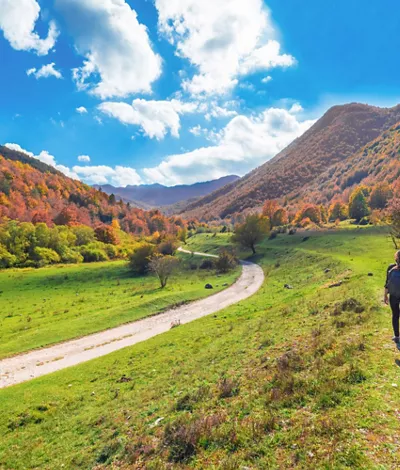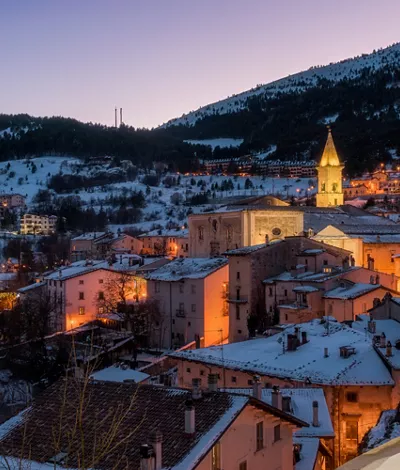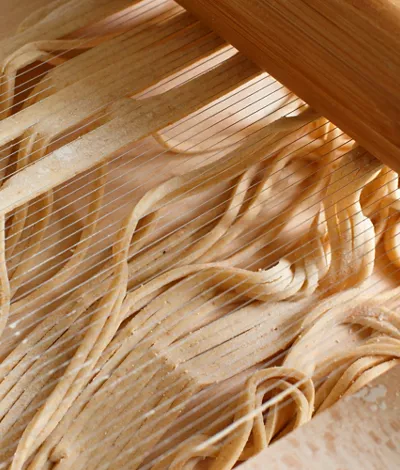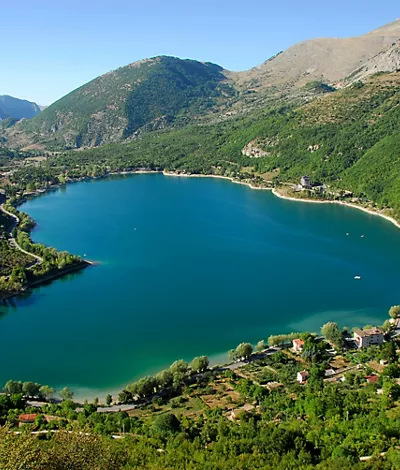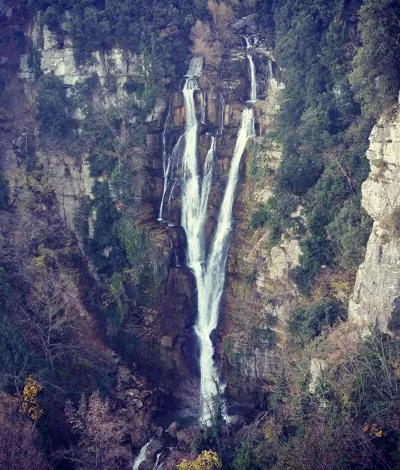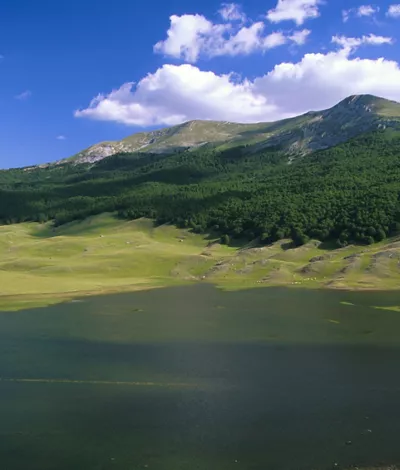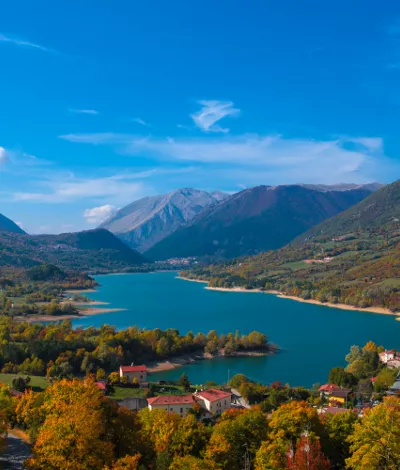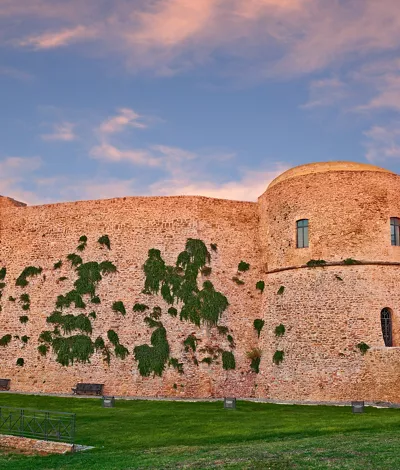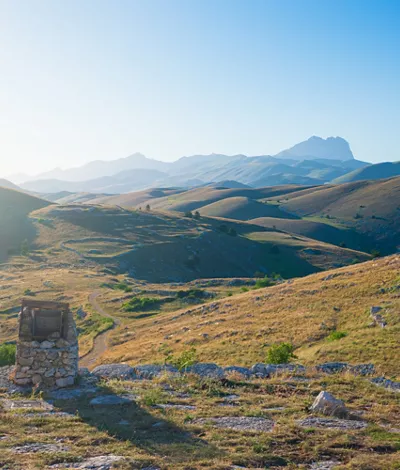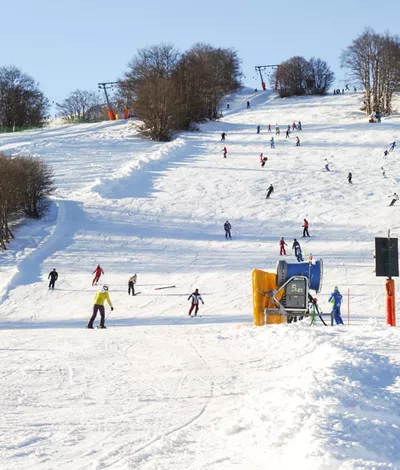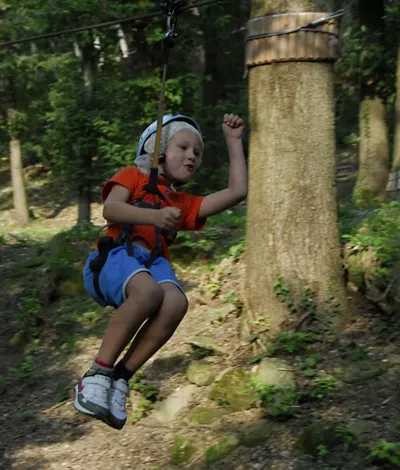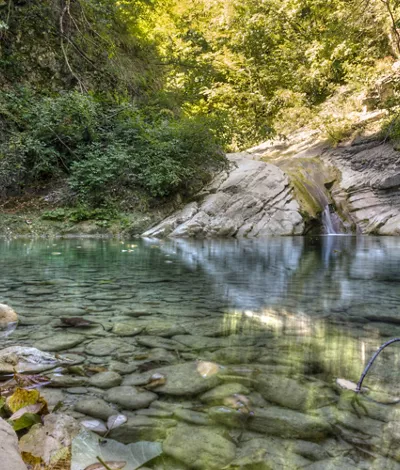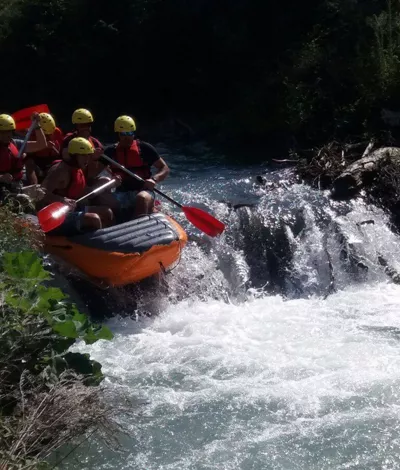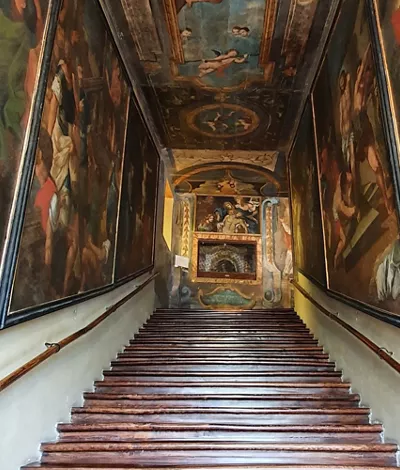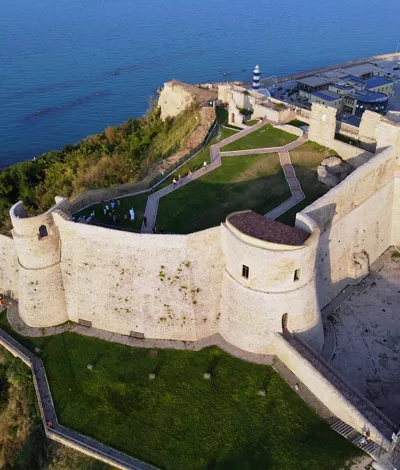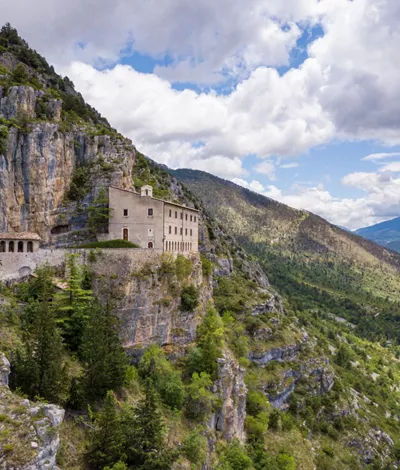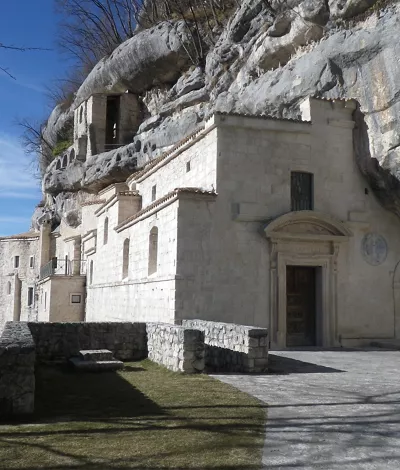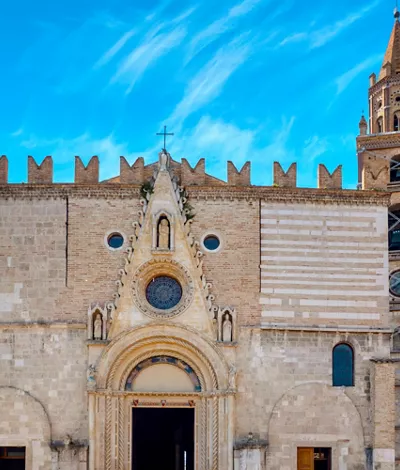Abruzzo, a journey through history between sea, mountains, flavours and unspoilt nature in parks and protected areas
A region in central Italy, Abruzzo has two souls and one heart. Predominantly mountainous and hilly, it overlooks a beautiful stretch of the Adriatic Sea. Here, you will find the highest peaks of the Apennines, such as the Gran Sasso and the Majella massif, as well as the only Apennine glacier, but also some of the most popular beaches.
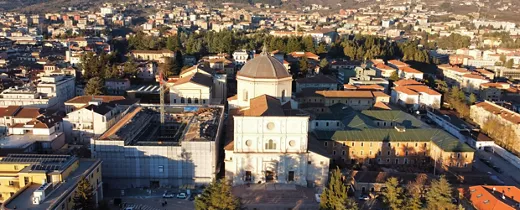
L'Aquila
The diamond of the Abruzzo plateau L’Aquila captivates visitors with its rich historical and architectural heritage. Strolling through the historic centre, you will find yourself in the heart of a plateau on which the city stands. After exploring the two main streets, Corso Vittorio Emanuele II and Corso Umberto I, which intersect perpendicularly and meet at Quattro Cantoni, you can visit Piazza del Duomo, also known as Piazza del Mercato. Here you will find L’Aquila Cathedral, with its neoclassical façade adorned with three coats of arms, severely damaged by the 2009 earthquake, it is currently inaccessible. Work on the reconstruction and restoration of the cathedral began on 27 February 2023. The square is also home to the Church of Saint Mary of Suffrage, with its over-35-metres-high neoclassical dome and late-Baroque façade. This church was also severely damaged by the 2009 earthquake and is undergoing restoration and consolidation work. In the Rivera district, don’t miss the Fountain of the 99 Water Spouts. This number is considered the symbol of the city, which legend has it was created by the inhabitants of 99 castles. It is said that in L’Aquila there are 99 squares, 99 churches and 99 fountains. If you happen to visit at the end of summer, don’t miss the world-renowned La Perdonanza Celestiniana, the most important historical-religious and social event in the area. The celebrations peak on 28th August, with the opening of the Holy Door of the Basilica of Santa Maria di Collemaggio.
Discover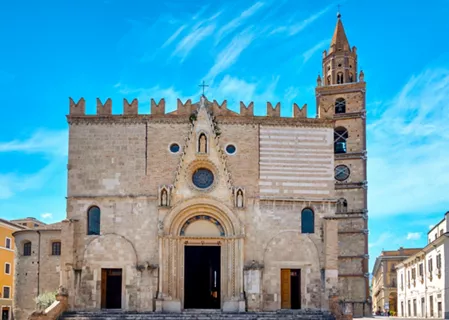
Teramo
Tucked between the Adriatic Sea and the Gran Sasso, Teramo is one of the most beautiful towns in Abruzzo Art, culture and nature come together in the charming town of Teramo, an ideal destination for those who want to relax without giving up on taking a leap back in time to discover the peoples and cultures that have made the history of this city since ancient Rome.
Discover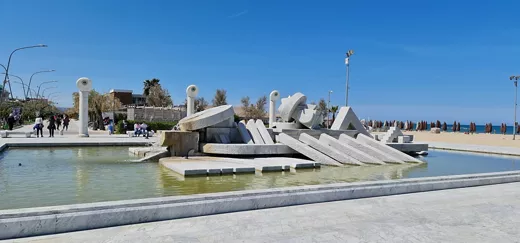
Pescara
Discovering an area full of surprises Embraced by the Adriatic Sea, the Gran Sasso and Maiella massifs, the province of Pescara is an area full of surprises. Dotted with villages, the area is predominantly hilly, but it is where the blue of the sea alternates with the golden sand of the Adriatic beaches where tourists and bathers from all parts of Italy - and beyond - arrive every year to spend their summer holidays. Pescara is its capital and the most populous city in the region. The reconstruction of the old town, after the bombing suffered during World War II, gives it a modern appearance. On a human scale, it is lively and generous. The waterfront is home to bathing establishments where you can soak up the sun during the day and have fun, with many restaurants, bars and clubs, at night. Birthplace of the poet Gabriele d'Annunzio, one of the unmissable stops in the city is his Birthplace. The whole province knows how to win over visitors with history, nature and sights to visit, all with a bunch of arrosticini in hand. From the Pescara Springs, the Cerrano Tower, to the Majella National Park, the Sanctuary of the Holy Face and the Hermitage of San Bartolomeo, the province of Pescara is a pearl of central Italy.
Discover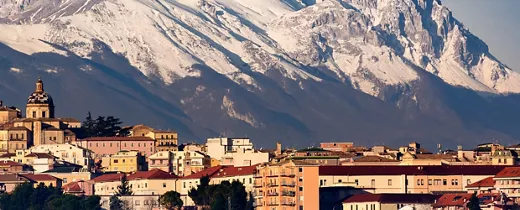
Chieti
Walking among nature, between the Maiella National Park and the Trabocchi Coast Nestled between Pescara and L’Aquila, the province of Chieti is dotted with delightful villages among the most beautiful in Italy. The Castle of Roccascalegna, perched on a cliff overlooking the Abruzzo hills, is a fortress steeped in legend, often used as a location for films and television series precisely because of its unique position. Guardiagrele, on the eastern border of the Majella National Park, is known as the city of wrought iron and copper, in recognition of the importance of metalworking in supporting the local economy over the centuries. And let’s not forget Rocca San Giovanni. This beautiful village near the Adriatic coast preserves traces of the passage of centuries and offers all who visit a stunning journey back in time. Chieti is best discovered on foot, walking through the alleyways of the historic centre and the more modern part that has developed between Chieti Scalo, Santa Filomena, San Martino and Madonna delle Piane. Cycling enthusiasts can make the most of the Bike To Coast cycle route that crosses the Trabocchi Coast, which is named after the structures jutting out into the sea that were historically used for fishing.
Discover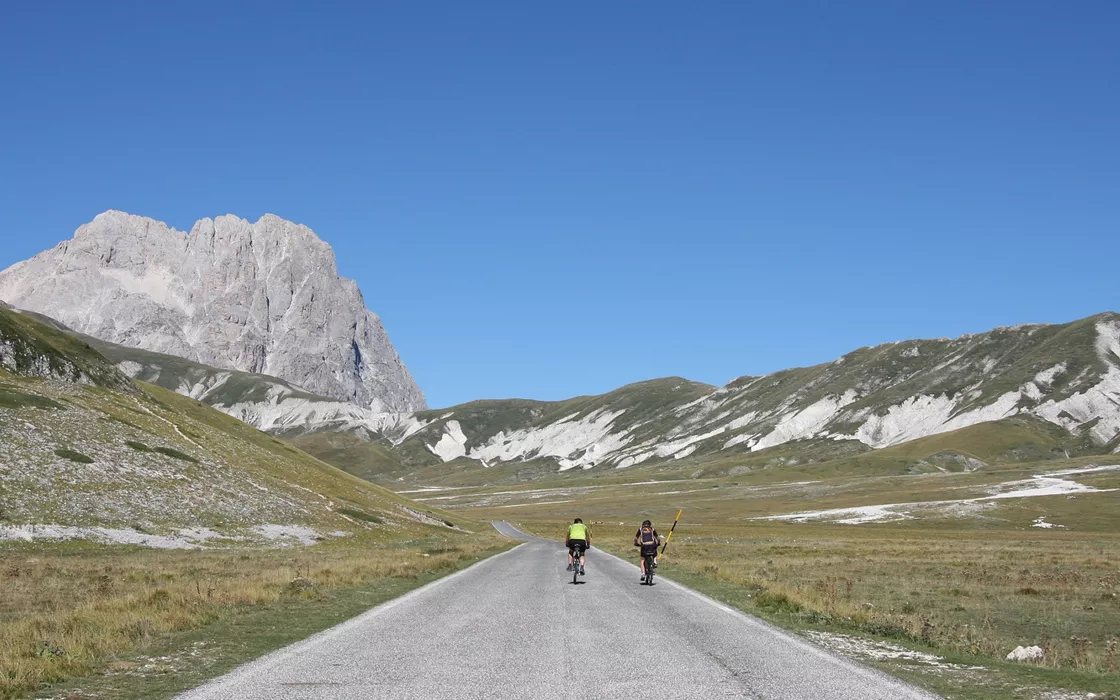



Bike to coast: the seaside cycle path from Martinsicuro to Silvi Marina
Learn more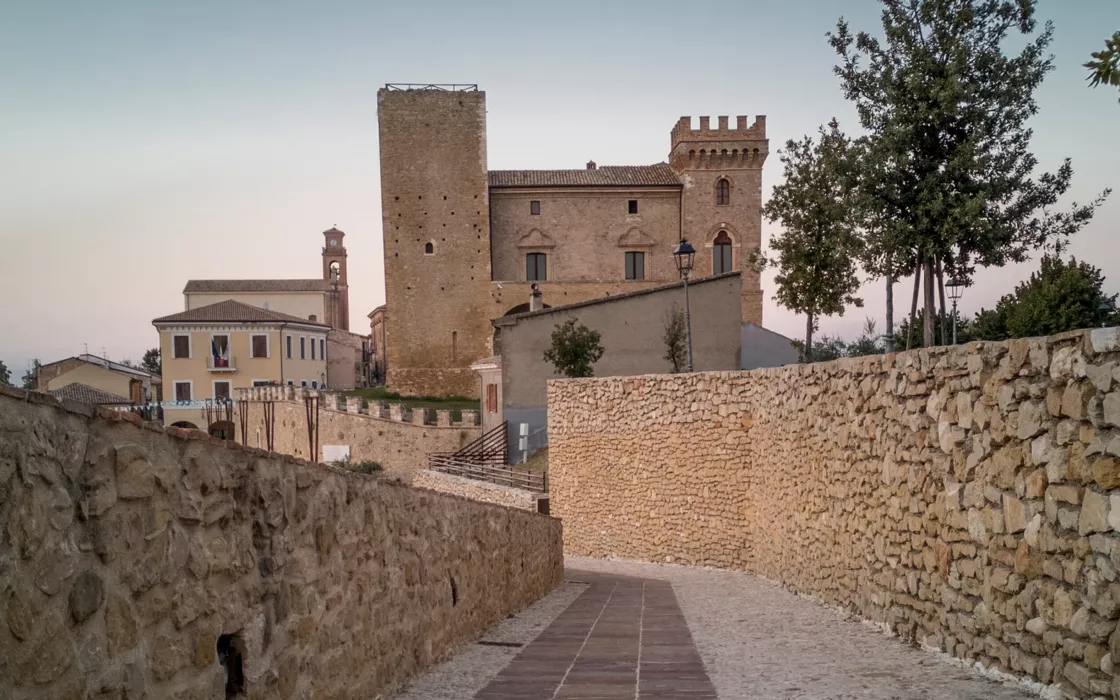




Bike to coast: the seaside cycle path from Martinsicuro to Silvi Marina
Learn more
A plunge into nature between sea and mountains
Abruzzo is the perfect opportunity to journey into authentic nature, from mountains to hills, through the Punta Aderici Regional Nature Reserve and the Abruzzo National Park, home to brown bears, golden eagles and Apennine wolves: a plunge into beauty, relaxation and an incredible mix of panoramas that reach the heart. Including some of the most picturesque villages in Italy.
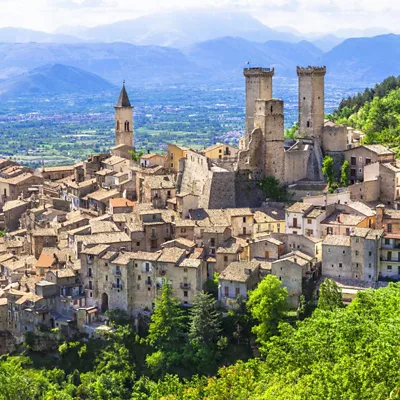

Continue living like an Italian
Subscribe to the Newsletter so as not to miss places, events and experiences for experiencing the best side of Italy: the authentic one.

Keep up to date
Would you like to learn about the most authentic experiences to be had in Italy, stay up to date on the most interesting events, discover our special offers and receive lots of insider hints and tips?


